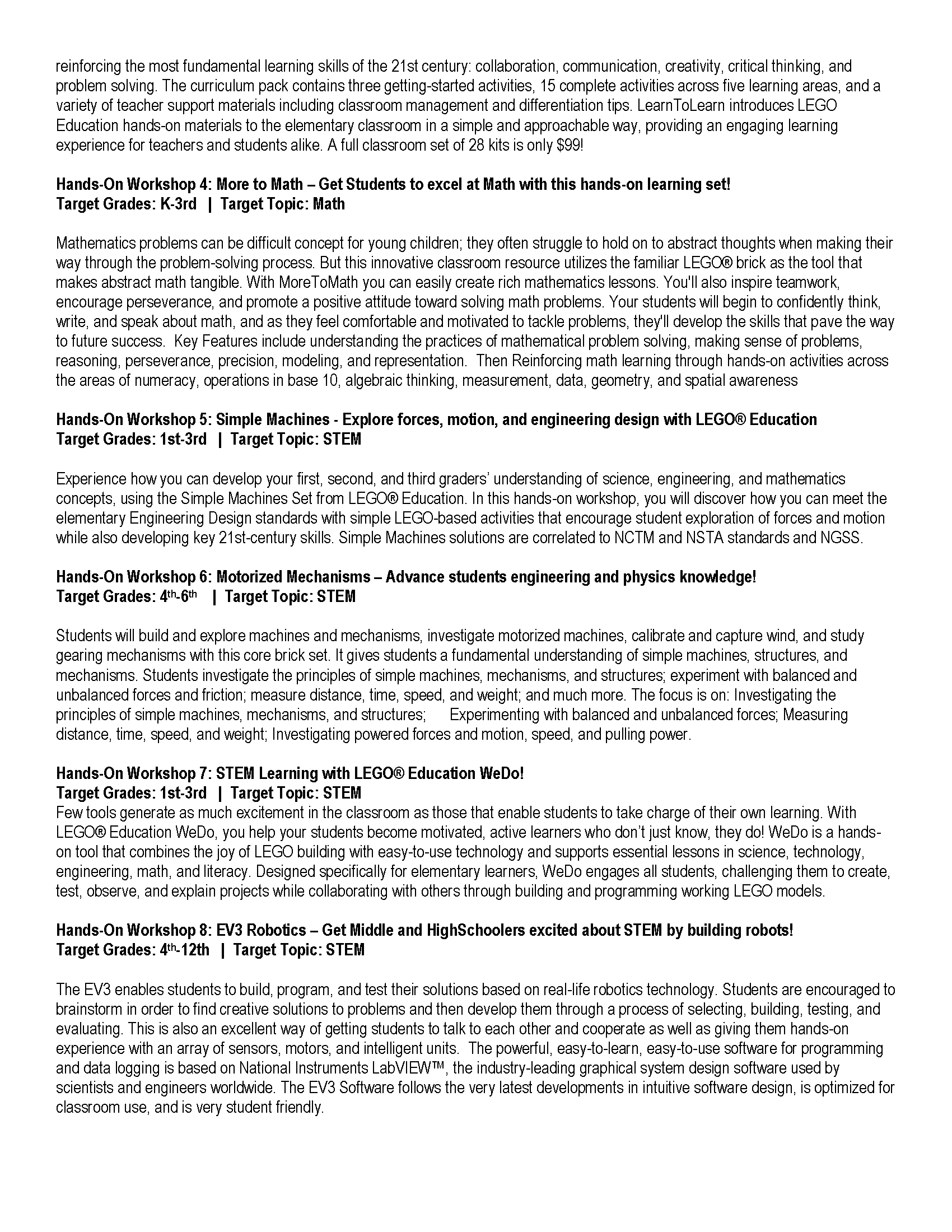Category Archives: Educational News
Teaching At Home/Addition
Once your student understands counting with manipulatives and identifies where whole numbers fall on a number line, you can add using both of this visuals. Start with adding 1+1, put out two beans and push the one and one together. The student should come up with 2. Have the child count the one and one and then count it again as 2. Show the numbers with dots on a paper. One dot plus one dot equals two dots. Now add 2+1 and move through the same process.
1+1, 2+1. 3+1, 4+1, 5+1, 6+1…
Then add 1+2 and look at 2+1 again to show student that 1+2 and 2+1 gives you the same number of beans or dots. This is COMMUTATIVE PROPERTY. Shows that you can add in either direction and get the same thing.
Move to the number line now. Put your finger or a pencil on the number 1. Adding one means moving right by one number. This will also show that 1+1=2. Show it with beans, dots and number line for several examples.
Go back and ask if 4+5 = 5+4 to revisit commutative property.
Continue to practice single digit addition until student feels confident.
Teaching Math at Home/Whole Numbers
IDENTIFYING WHOLE NUMBERS
Start with Natural Numbers in another post. What you will do now is share that Whole Numbers are Natural Numbers plus the number zero. We don’t learn to count using zero. Explain the zero means nothing. Show a number line at this point. Have the students use counters (beans, pennies, cubes, etc… under each of the above numbers. Explain that there are no counters under the zero. Ask questions to see if student understands the concept of zero.
Teach Numbers at Home/Natural Numbers
Parents and teachers, remember the importance of providing the concrete foundation for numbers. Here is an easy guide to give children a great foundation to:
IDENTIFYING NATURAL NUMBERS
- Teach children how to count aloud. (1,2,3,4,5,6,7,8,9,10…
- Show them what the number look like as they say them.
- Show them with number of dots that each number represents. (1. 2: 3:. 4:: 5::
- Show them one-to-one correspondence with a manipulative (Something they can touch and hold in their hands- beans, pennies, cubes…)
Work on natural numbers (how we naturally learn to count) for as long as needed in order to gain full understanding. Ask the child to give you a number to build.
This process gives children something to recall, a picture of in their mind. This is called CONCRETE. If students do not have the objects, they can work on the problem by drawing it if necessary. This is called REPRESENTATION. Finally using the numbers and symbols, this is the ABSTRACT. Learning should occur amongst the three forms when learning a new skill. Going straight to abstract without the concrete foundation leaves children to memorize and not truly understand WHAT they are learning.
Beginning with one-to-one correspondence teaches them that each item is counted as one. This will allow students to learn much more advanced levels when they have the opportunity to build problems with Hands-On materials.
Stats about High School and College Dropouts
Eye-Opening Stats about High School and College Dropouts
Guest blog post by Chad Aldeman
With Congress busy debating the future of federal education policy, here’s a thought-provoking statistic: American adults in the 1940s had about the same odds of being a high school graduate as today’s Americans have of being a college graduate.
Beyond the pure shock value of this dramatic shift, it begs the question of whether the two rates will grow at the same rates. Will we boost college attainment rates in this century as fast as we increased high school attainment in the last century?
So far, they’re relatively close mirrors of each other. In 1910, 13.5 percent of American adults had a high school diploma. Forty years later, that figure had risen 21 percentage points. In 1975, 13.9 percent of American adults had a bachelor’s degree. 38 years later, that figure had risen 18 percentage points.
The graph below shows how these two trend lines look remarkably similar. The key question is what will happen next.

We already know what happened to high school attainment rates. We shifted from relatively slow progress through the first half of the 1900s into a much faster rate of growth between 1950 and 1980. In those 30 years, the percentage of American adults with a high school diploma or GED (General Education Diploma) doubled from 34.3 percent to 68.6 percent. Today we’re inching toward 90 percent of our adult population with a high school diploma or GED.
There are still schools with low graduation rates, but even those are falling fast. Nationwide the number of dropout factories—high schools with a graduation rate under 60 percent—declined from more than 2,007 in 2002 to 1,146 in 2013. Similarly, the number of students enrolled in those dropout factories plummeted from 2.6 million to 1.1 million, even as the total student population nationwide increased.
As I show in a new report for Bellwether Education Partners, rapid progress at the high school level, combined with very slow progress in postsecondary education, has led to dramatic changes in our society. And in 2009, the U.S. passed an almost-inevitable milestone: There are now more American adults who have dropped out of college than have dropped out of high school.

In pure, raw numbers, college dropouts are now a bigger problem than high school dropouts. Today there are 29.1 million college dropouts versus 24.5 million Americans with less than a high school diploma. It’s safe to predict that this trend will only accelerate as older generations with lower educational attainment rates are gradually replaced by new generations with higher attainment rates.
A number of factors contributed to these changes. In the labor market, employers send a powerful signal that they value candidates with higher levels of education. Individuals are more likely to be employed, and to earn higher wages, for higher levels of education. Compulsory attendance laws played a role too, accelerating high school attendance and completion rates. The introduction of the GED began as a way to offer returning World War II veterans a path to a high school diploma without having to go back to high school. Over time, it took on an even bigger role for other groups of high school dropouts. There are now 6 million Americans with a high school equivalency degree like the GED. That alone accounts for about 3 percent of the increase.
More recently, No Child Left Behind forced schools and districts to start paying attention to high school graduation rates. Those accountability mechanisms helped kickstartanother push to get all students through high school, a reform that has particularly paid off for low-income and minority students and for students with disabilities.
Will college attainment rates keep making slow but steady progress, as they have over the past 40 years, or will we start to see faster growth like we did for high school attainment rates? In my recent paper, I argue that enhancing high school policies could be one lever for policymakers. If states truly held high schools accountable for what happens to their students after graduation, they would build robust portraits of high school quality that measured things like advanced high school course-taking rates, student engagement, and student outcomes in college and careers. All of these steps would ease the transition from high school into college.
But we shouldn’t let higher education institutions off the hook for oversubscribing students to remedial courses or for failing to graduate large portions of their students. It’s an open question whether we’ll make the equivalent policy adjustments in higher education as we did in K-12: will someone create a “GED for college” or will we start holding colleges accountable for their graduation rates to boost education attainment? The answers to these questions matter both to the individuals graduating today and to our broader society going forward.
Chad Aldeman is an Associate Partner at Bellwether Education Partners and the author of “Mind the Gap,” a new report making the case for re-imagining the way states judge high school quality.
Dinosaurs in the Bible
What do you think? VERY interesting! ~Sandy
Is God a Mathematician?
Submitted by Tristan Adam Carl
How Well Do You Know the American Constitution
I have kept a constitution test in my “Quizzes for my husband and son” File.
How well do you and your family know the Constitution? ~Sandy
CONSTITUTION WORKSHEET
(PRETEST)
True or False
1. ______ Our first Constitution was called the Articles of Confederation.
2. ______ Under the Articles of Confederation, Congress had too much power.
3. ______ The first fifteen amendments are called the “Bill of Rights”.
4. ______ Our government is divided into three main branches.
5. ______ The number of articles in the Constitution is seven.
6. ______ There are 21 amendments to the Constitution.
7. ______ Laws for our country may be made only by Congress.
8. ______ United States Representatives have a four year term.
9. ______ Senators have six year terms.
10. ______ The number of representatives a state gets depends on the number of
people in the state.
11. ______ Representatives must be at least 30 years old.
12. ______ Senators must be at least 25 years old.
13. ______ The Vice President serves as Speaker of the House.
14. ______ The number of senators each state gets is three.
15. ______ All impeachments are tried by the Senate.
16. ______ A majority vote makes an impeached man guilty.
17. ______ Congress must meet at least once a year.
18. ______ Senators and Representatives are not paid for their work by the United
States Government.
19. ______ Senators and Representatives may hold no other government jobs while
they are in office.
20. ______ Only the Senate may write tax bills.
21. ______ A bill can never be passed without the Presidentʼs signature.
22. ______ Congress has no power to borrow money.
23. ______ Only the President can declare war.
24. ______ Congress may keep an army for two years at a time.
25. ______ Congress has no power over state militias.
26. ______ A writ of habeas corpus is the same as a bill of attainder.
27. ______ Ex post facto laws may be passed by Congress.
28. ______ Congress has no right to tax products sent from a state.
29. ______ Any state has the right to print its own money.
30. ______ The number of electoral votes a state gets is the same as its number in the
House of Representatives.
31. ______ The President must be at least 40 years old.
32. ______ The President must have lived in the United States for at least 14 years.
33. ______ The President is the Commander in Chief of the armed forces.
34. ______ The President has the power to pardon an impeached man.
35. ______ The President may make a treaty with a foreign country only if the Senate
approves it.
36. ______ The President chooses Supreme Court judges.
37. ______ The President may call Congress together whenever he thinks it is
necessary.
38. ______ Congress has the power to say what punishment is to be given for treason.
39. ______ United States judges are appointed for life.
40. ______ After amendments have been proposed, they must be ratified by a two
thirds vote in both houses of Congress to become part of the Constitution.
41. ______ An amendment may be made to change the number of senators the states
get.
42. ______ The Constitution is the highest law of our land.
43. ______ All Americans have the right to follow any legal religion they want.
44. ______ The United States Government may take any personʼs property if they can
show a necessity for it, but they must pay for it.
45. ______ In court trials, witnesses against a man must speak when he is there.
46. ______ A person may be tried any number of times for the same crime.
47. ______ A court may give any punishment the judge wishes to give.
48. ______ A state may make a law to keep a person from voting because of his
religion or race.
49. ______ Senators are elected by state legislators.
50. ______ A “writ of habeas corpus” may be suspended in times of war or in cases
where the public safety is involved.
MULTIPLE CHOICE
51. People are guaranteed freedom of speech, press, and religion according to the
a. second amendment c. fifth amendment
b. first amendment d. ninth amendment
52. The only amendment to be repealed is the
a. 15th b. 20th c. 18th d. 2nd
53. The number of main branches in our government is
a. 6 b. 21 c. 7 d. 3
54. Congress is divided into
a. 3 parts b. 2 parts c. 4 parts d. 12 parts
55. A Representative in the House is elected to a
a. 2 year term b. 4 year term c. 6 year term d. 8 year term
56. To be a Representative in the House you must have these qualifications
a. live in the state you represent
b. live in the state and have been a citizen for 7 years
c. be 25 years old, live in the state, and be a citizen
d. live in the state, have been a citizen for 7 years, be 25 years old
57. The number of Representatives a state gets depends on
a. the number of voters it has c. the number of Senators it has
b. the number of people it has d. how many they want
58. The Speaker of the House of Representatives is
a. the man they elect c. the Vice President
b. the Secretary of State d. the oldest Representative
59. The power to impeach an officer is given only to
a. the House of Representatives c. the Senate
b. the Supreme Court d. the President
60. Each state gets this number of Senators
a. 1 for every 30,000 c. 2 for each district
b. 3 d. 2
61. The length of a Senatorʼs term is
a. 2 years b. life c. 6 years d. 8 years
62. The Senators are now elected by
a. state legislators c. the state electors
b. the House of Representatives d. the people
63. To be a Senator in Congress you must have these qualifications
a. live in the state you represent
b. live in the state, be 25 years old, and have been a citizen for 7 years
c. live in the state, be 25 years old, and have been a citizen for 9 years
d. live in the state, be 30 years old, and have been a citizen for 9 years
64. All impeachments are tried by the
a. Supreme Court c. Cabinet
b. Senate d. House of Representatives
65. Bills to raise taxes may come only from the
a. Senate c. House of Representatives
b. President d. Cabinet
66. A bill becomes a law without the Presidentʼs signature if
a. two thirds of both houses pass it c. the Senate passes it
b. the House of Representatives passes it d. the Supreme Court passes it
67. A bill which has passed both houses can become a law without the Presidentʼs
signature if
a. the Supreme Court says so
b. the President does not return it to Congress in 10 days
c. the Chief Justice says so
d. the state legislators pass it
68. Taxes may be called for only by the
a. Congress b. President c. Supreme Court d. Cabinet
69. Rules for becoming a U.S. citizen may be made only by the
a. states b. Supreme Court c. Congress d. President
70. Money may be coined or printed only by the
a. Congress c. President
b. Secretary of Treasury d. Secretary of State
71. War may be declared only by the
a. Congress c. President
b. Secretary of Defense d. War Department
72. A writ of habeas corpus is used to
a. impeach the president c. get a man out of jail
b. tell a jury what to do d. ask for an amendment
73. The Constitution forbids the use of a
a. veto b. oath c. preamble d. bill of attainder
74. A law which punishes a man for something not wrong when he did it is called a
a. bill of attainder b. treason c. felony d. ex post facto
75. The Constitution forbids states to
a. make laws b. lay a sales tax c. coin money d. take a census
76. The Constitution forbids Congress to lay a tax on
a. goods sent from one state to another c. liquor
b. goods sent from other countries d. any good sent by ship
77. The number of presidential electors a state gets is
a. the same as the number of Representatives
b. the same as the number of Senators
c. the number of Representatives plus the number of Senators
d. the same as the number of state legislators
78. The qualifications for President are
a. be 35 years old, be a natural born citizen, have lived in the U.S. for 14 years
b. be a citizen, be 35 years old, have lived seven years in the U.S.
c. be a citizen, be 25 years old, have lived 14 years in the U.S.
d. be a natural born citizen, have lived in the U.S. 9 years, and be 30 years old
79. If neither the President nor the Vice President can serve as President, the next in
line is the
a. Chief Justice of the Supreme Court c. Speaker of the House
b. Secretary of State d. Attorney General
80. Treaties made by the President must get the approval of the
a. Supreme Court c. House of Representatives
b. Senate d. people
81. The length of a U.S. government judgeʼs term is
a. 2 years b. life c. 4 years d. 6 years
82. The number of people in the Supreme Court is
a. 8 b. 9 c. 12 d. 15
83. The Constitution guarantees everybody who has done a crime a trial
a. by jury c. in the Supreme Court
b. in the Department of Justice d. in the state of their choice
84. The number of witnesses needed to convict a man of treason is
a. 1 b. 2 c. 3 d. 4
85. A new state may be admitted into the Union only by the
a. Supreme Court c. Congress
b. State Department d. Department of Interior
86. The Constitution guarantees to every state in the Union
a. freedom to make any law it wishes c. legal help
b. a republican form of government d. a pension system
87. To propose an amendment it is necessary to have the agreement of
a. two thirds of both houses of Congress c. the Senate
b. three fourths of both houses of Congress d. the President
88. An amendment goes into the Constitution after it has been ratified by
a. three fourths of the State Legislators c. the Supreme Court
b. two thirds of both houses of Congress d. a majority of Congress
89. No Constitutional amendment could ever change
a. the way we elect the President c. the way Senators are elected
b. equal state representation in the Senate d. the number of states we have
90. Nobody holding a United States office will ever have to pass
a. a Constitution test c. a mental test
b. a religious test d. an age test
91. Congress shall make no law to
a. set voting ages c. establish a draft
b. tax incomes d. set up a religion
92. No personʼs house or property may be searched without a
a. bill of attainder c. search warrant
b. government investigation d. writ of habeas corpus
93. The court may not take a persons life without
a. a circuit judgeʼs agreement c. due process of law
b. evidence of treason d. a confession
94. A person accused of a crime has the right to
a. hear the witnesses against them
b. appeal their case to the Supreme Court
c. have any judge he or she wants
d. be tried wherever they choose
95. The President is elected if
a. they receive a majority of the electoral votes
b. they receive the most popular votes
c. they win the most states
d. they receive the most electoral votes
96. If the candidates for President have no majority of the electoral votes, the
President is elected by the
a. Cabinet c. Senate
b. House of Representatives d. Supreme Court
97. A citizen of the U.S. is a person who
a. owns property in the U.S. c. is white and was born or naturalized here
b. pays taxes d. was born or naturalized here
98. The U.S. can punish a state which denies the right of citizens to vote by
a. fining it
b. reducing its number of Representatives
c. putting it out of the Union
d. reducing its number of Senators
99. How many articles are in the Constitution?
a. 7 b. 21 c. 27 d. 10
100. How many amendments are in the Constitution?
a. 7 b. 21 c. 27 d. 10
MATCHING – Write the number of the amendment that corresponds with the
appropriate amendment.
101. ________ right to bear arms
102. ________ defines citizens and their rights
103. ________ voting age lowered to 18
104. ________ freedom of expression (speech, press, religion, assemble, petition)
105. ________ abolition of slavery
106. ________ right of women to vote
107. ________ income tax
108. ________ repeal of prohibition
109. ________ election of the President & Vice President and who chooses if no
majority
110. ________ limit of presidential terms
111. ________ presidential disability and succession, process for choosing a new V.P.
112. ________ powers reserved to the states
113. ________ prohibition of alcoholic beverages
114. ________ “lame duck” amendment, moves up date of Presidentʼs inauguration
115. ________ direct election of senators by the people
116. ________ powers reserved to the people
117. ________ right of Washington D.C. to vote in presidential election
118. ________ no quartering of troops
119. ________ bail and punishment
120. ________ suits against the states
121. ________ abolition of poll taxes
122. ________ search and seizure
123. ________ a speedy and fair trial
124. ________ civil suits have the right to a jury
125. ________ rights of an accused person, double jeopardy
126. ________ right of black men to vote
127. ________ congressional salaries
Treasures For Teachers
The Six Living Generations In America
In America, there are six living generations, which are six fairly distinct groups of people. As a generalization each generation has different likes, dislikes, and attributes. They have had collective experiences as they aged and therefore have similar ideals. A person’s birth date may not always be indicative of their generational characteristics, but as a common group they have similarities.
The six living generations
GI Generation.
- Born 1901-1926.
- Children of the WWI generation & fighters in WWII & young in the Great Depression…all leading to strong models of teamwork to overcome and progress.
- Their Depression was The Great One; their war was The Big One; their prosperity was the legendary Happy Days.
- They saved the world and then built a nation.
- They are the assertive and energetic do’ers.
- Excellent team players.
- Community-minded.
- Strongly interested in personal morality and near-absolute standards of right and wrong.
- Strong sense of personal civic duty, which means they vote.
- Marriage is for life, divorce and having children out of wedlock were not accepted.
- Strong loyalty to jobs, groups, schools, etc.
- There was no “retirement” you worked until your died or couldn’t work anymore.
- The labor-union-spawning generation.
- “Use it up, fix it up, make it do, or do without.”
- Avoid debt…save and buy with cash.
- Age of radio and air flight; they were the generation that remembers life without airplanes, radio, and TV.
- Most of them grew up without modern conveniences like refrigerators, electricity and air conditioning.
- Sometimes called The Greatest Generation.

Mature/Silents.
- Born 1927- 1945.
- Went through their formative years during an era of suffocating conformity, but also during the postwar happiness: Peace! Jobs! Suburbs! Television! Rock ‘n Roll! Cars! Playboy Magazine!
- Korean and Vietnam War generation.
- The First Hopeful Drumbeats of Civil Rights!
- Pre-feminism women; women stayed home generally to raise children, if they worked it was only certain jobs like teacher, nurse or secretary.
- Men pledged loyalty to the corporation, once you got a job, you generally kept it for life.
- The richest, most free-spending retirees in history.
- Marriage is for life, divorce and having children out of wedlock were not accepted.
- In grade school, the gravest teacher complaints were about passing notes and chewing gum in class.
- They are avid readers, especially newspapers.
- “Retirement” means to sit in a rocking chair and live your final days in peace.
- The Big-Band/Swing music generation.
- Strong sense of trans-generational common values and near-absolute truths.
- Disciplined, self-sacrificing, & cautious.

Baby Boomers
- Born between 1946 and 1964. Two sub-sets:
- 1. the save-the-world revolutionaries of the ’60s and ’70s;
- and 2. the party-hardy career climbers (Yuppies) of the ’70s/’80s.
- The “me” generation.
- “Rock and roll” music generation.
- Ushered in the free love and societal “non-violent” protests which triggered violence.
- Self righteous & self-centered.
- Buy it now and use credit.
- Too busy for much neighborly involvement yet strong desires to reset or change the common values for the good of all.
- Even though their mothers were generally housewives, responsible for all child rearing, women of this generation began working outside the home in record numbers, thereby changing the entire nation as this was the first generation to have their own children raised in a two-income household where mom was not omnipresent.
- The first TV generation.
- The first divorce generation, where divorce was beginning to be accepted as a tolerable reality.
- Began accepting homosexuals.
- Optimistic, driven, team-oriented.
- Envision technology and innovation as requiring a learning process.
- Tend to be more positive about authority, hierarchal structure and tradition.
- One of the largest generations in history with 77 million people.
- Their aging will change America almost incomprehensibly; they are the first generation to use the word “retirement” to mean being able to enjoy life after the children have left home. Instead of sitting in a rocking chair, they go skydiving, exercise and take up hobbies, which increases their longevity.
- The American Youth Culture that began with them is now ending with them and their activism is beginning to re-emerge.

Generation X.
- Born between 1965 and 1980*
- The “latch-key kids” grew up street-smart but isolated, often with divorced or career-driven parents. Latch-Key came from the house key kids wore around their neck, because they would go home from school to an empty house.
- Entrepreneurial.
- Very individualistic.
- Government and big business mean little to them.
- Want to save the neighborhood, not the world
- Feel misunderstood by other generations
- Cynical of many major institutions, which failed their parents, or them, during their formative years and are therefore eager to make marriage work and “be there” for their children
- Don’t “feel” like a generation, but they are
- Raised in the transition phase of written based knowledge to digital knowledge archives; most remember being in school without computers and then after the introduction of computers in middle school or high school
- Desire a chance to learn, explore and make a contribution
- Tend to commit to self rather than an organization or specific career. This generation averages 7 career changes in their lifetime, it was not normal to work for a company for life, unlike previous generations.
- Society and thus individuals are envisioned as disposable.
- AIDS begins to spread and is first lethal infectious disease in the history of any culture on earth which was not subjected to any quarantine.
- Beginning obsession of individual rights prevailing over the common good, especially if it is applicable to any type of minority group.
- Raised by the career and money conscious Boomers amidst the societal disappointment over governmental authority and the Vietnam war.
- School problems were about drugs.
- Late to marry (after cohabitation) and quick to divorce…many single parents.
- Into labels and brand names.
- Want what they want and want it now but struggling to buy, and most are deeply in credit card debt.
- It is has been researched that they may be conversationally shallow because relating consists of shared time watching video movies, instead of previous generations.
- Short on loyalty & wary of commitment; all values are relative…must tolerate all peoples.
- Self-absorbed and suspicious of all organization.
- Survivors as individuals.
- Cautious, skeptical, unimpressed with authority, self-reliant.

Generation Y/Millennium.
- Born between 1981* and 2000*.
- Aka “The 9/11 Generation” “Echo Boomers” America’s next great generation brings a sharp departure from Generation X.
- They are nurtured by omnipresent parents, optimistic, and focused.
- Respect authority.
- Falling crime rates. Falling teen pregnancy rates. But with school safety problems; they have to live with the thought that they could be shot at school, they learned early that the world is not a safe place.
- They schedule everything.
- They feel enormous academic pressure.
- They feel like a generation and have great expectations for themselves.
- Prefer digital literacy as they grew up in a digital environment. Have never known a world without computers! They get all their information and most of their socialization from the Internet.
- Prefer to work in teams.
- With unlimited access to information tend to be assertive with strong views.
- Envision the world as a 24/7 place; want fast and immediate processing.
- They have been told over and over again that they are special, and they expect the world to treat them that way.
- They do not live to work, they prefer a more relaxed work environment with a lot of hand holding and accolades.

Generation Z/Boomlets.
- Born after 2001*
- In 2006 there were a record number of births in the US and 49% of those born were Hispanic, this will change the American melting pot in terms of behavior and culture. The number of births in 2006 far outnumbered the start of the baby boom generation, and they will easily be a larger generation.
- Since the early 1700’s the most common last name in the US was ‘Smith’ but not anymore, now it is Rodriguez.
- There are two age groups right now:
- (a) Tweens.
- (a1) Age 8-12 years old.
- (a2) There will be an estimated 29 million tweens by 2009.
- (a3) $51 billion is spent by tweens every year with an additional $170 billion spent by their parents and family members directly for them.
- (b)Toddler/Elementary school age.
- 61 percent of children 8-17 have televisions in their rooms.
- 35 percent have video games.
- 14 percent have a DVD player.
- 4 million will have their own cell phones. They have never known a world without computers and cell phones.
- Have Eco-fatigue: they are actually tired of hearing about the environment and the many ways we have to save it.
- With the advent of computers and web based learning, children leave behind toys at younger and younger age. It’s called KGOY-kids growing older younger, and many companies have suffered because of it, most recognizable is Mattel, the maker of Barbie dolls. In the 1990’s the average age of a child in their target market was 10 years old, and in 2000 it dropped to 3 years old. As children reach the age of four and five, old enough to play on the computer, they become less interested in toys and begin to desire electronics such as cell phones and video games.
- They are Savvy consumers and they know what they want and how to get it and they are over saturated with brands.
References.
deMesa, A. (2008). Marketing and tweens. Retrieved on February 21, 2008.
Elegant, S. (5 November 2007). China’s me generation. Time Magazine.
Generational Generalities. (2005). America’s generations. Retrieved November 6, 2007.
Generational Imperative. (2006). Meet Americas 5 living generations. Retrieved on November 6, 2007.
Marketing Vox. (2008). Generation Z. Retrieved on February 14, 2008.
Parents. (December 2007). Check out this news. Parents Magazine, p.166.
This is only a guideline, remember that everyone is different and not everyone fits into this analysis, but for the most part you can generalize their behavior. As a marketer, it is important to know how to effectively communicate and market to these diverse generations. In understanding consumer behavior, you can create the right promotion, tailoring it specifically for each group’s needs and therefore effectively sell products and services.
The dates for GI, Mature, and Baby Boomer and the beginning of Gen X are set and do not change, the dates for the end of Gen X, Gen Y and Gen Z fluctuate depending on what source you are using.





